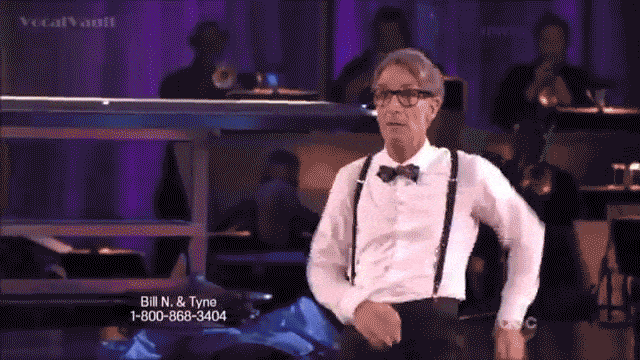Did you know… feelings ARE behaviors?
How many times have you heard me hammer on the concept that *every time we are training a behavior, we are shaping an emotional state AT THE SAME TIME*? Maybe a few (bazillion)?
It’s kind of a theme for me, and it strongly influences my teaching and training. But it’s also something I have to remind myself of frequently. It’s so darn easy to get focused on one aspect of a behavior and lose sight of the other.
Operant conditioning (OC) and classical conditioning (CC) are natural processes that are constantly occurring at the same time. We can’t ever separate them. And that can work both for and against our training. So it seems reasonable that we’d like to use all the tools at our disposal to use both processes to our advantage. Good, not evil!
So I really enjoyed Lindsay Wood Brown’s presentation, “Great Divide”, at Clicker Expo, because not only did she reiterate and confirm my point, but she also unpacked the science behind it, both from a behavior science AND neuroscience standpoint. AND YOU KNOW HOW I FEEL ABOUT SCIENCE!

What I loved best about this presentation is how she described that really OC and CC are different *procedures*, meaning the difference is in how we apply training techniques with a specific goal in mind… are we focused on changing an observable behavior or on changing an association, involuntary response or emotion. But that OC and CC aren’t at all separate in terms of learning processes… they are interwoven in the brain. LITERALLY! (*squee!*)
“We can choose to focus on one or the other, we can select a procedure we think is a best fit for our goals, but we cannot separate the learning processes at play within the animal.”
Lindsay elegantly demonstrated that any time we are applying a procedure of OC or CC, both learning processes occur simultaneously and can impact our training and the outcome.
When we are applying a CC procedure to achieve a “positive conditioned emotional response” (+CER), these conditioned emotional responses manifest as respondent (aka reflexive/involuntary) and operant (voluntary) behaviors. The very things we call “emotions” are a combination of both respondent and operant behaviors.
What that means is when we say that a dog is feeling “fear”, we are labeling a combination of observable behaviors… pupil dilation, trembling, piloerection (all involuntary responses) PLUS backing up and barking (both voluntary). And we put all those behaviors in a box and write FEAR on the sticker.
We are all familiar with examples of behavior indicative of + or – CER: Waggy tails and wiggly bodies, or piloerection, trembling, and freezing. Some of these behaviors are reflexive and hard-wired into the nervous system… like the freeze that typically precedes a flight or fight response. The dog cannot control these reflexive behaviors; they are completely involuntary.
But other behaviors occur at the same time, like an orienting response, and are under voluntary control.
“And if the behavior is under voluntary control, whatever follows it may reinforce or punish it even when we think we are applying only a classical conditioning procedure.”
However, the primary benefit to talking about OC and CC as different procedures is that it focuses our attention to where we can best direct our training techniques. We don’t have to worry that petting a fearful dog will make him more fearful. The reflexive emotional response of trembling cannot be reinforced by our touch or anything else, it’s involuntary. So trembling behavior is not subject operant conditioning.
And knowing which components in that “fear” package ARE operant and under voluntary control, like moving to sit beside you, entering a comfortable crate, or going to his bed can be reinforced. We can reinforce this behavior of moving to a safe place, and that is a GREAT benefit to the dog. Our training is well-placed in this situation.
Ultimately, awareness of the OC and CC interplay and CER development is beneficial for how we develop our training plans. We don’t necessarily have to do anything differently with our training, but to always be aware that CERs are “along for the ride.”
As clicker trainers, this already works to our advantage, because good clicker training is perfect for attaching happy, joyful CERs to the behaviors that we train. Great! Let’s all take a moment and bask in that!

Where we run into trouble, is when we start trying to apply some recipe, maybe one the internet or another trainer said we should use, and we inevitably run into limitations inherent to this natural process or a troublesome manifestion of that OC/CC interplay. Depending on our perspective, we may run up against these limitations and perceive the method itself as flawed.
But there may well be nothing at all wrong with the method, and the processes themselves are not inherently flawed. They just ARE (like gravity).
Of course, it could be an application error, and often that’s the case when a method “doesn’t work”. But not always. What if you did everything right? You perfectly applied the ideal order of events and timing to create the CER you were looking for, and it still didn’t turn out the way you expected. Lindsay argues that “the answer lies in the limitations of each procedure as well as the interplay between the two processes.”
Her resource guarding example unpacked how this concept plays out in practical training, taking advantage of both processes occurring simultaneously.
She starts with a typical counterconditioning and desensitization approach, incrementally decreasing the distance from human to food bowl and pairing that with a tasty treat. That starts to change the dog’s (involuntary) emotional response to humans approaching the food he’s eating, and before long the dog is starting to lift his head out of the bowl… which is totally voluntary. Now we are in operant territory!
So from there, she can deliberately reinforce that head lift behavior, and use treat placement to facilitate that training. And of course, as she’s shaping this head-out-of-bowl (which incidentally is the opposite of the typical food guarding posture), she’s STILL putting money in that counterconditioning (involuntary emotional) bank account. Both OC and CC happening at the same time, and both moving in the direction of our goal. Win-win!
She goes on with more examples in training and behavior modification than I can possibly describe here. So if you happen to be attending Clicker Expo in the near future, be sure to check it out!
(For more info, Lindsay Wood Brown can be found most easily on Facebook.)
